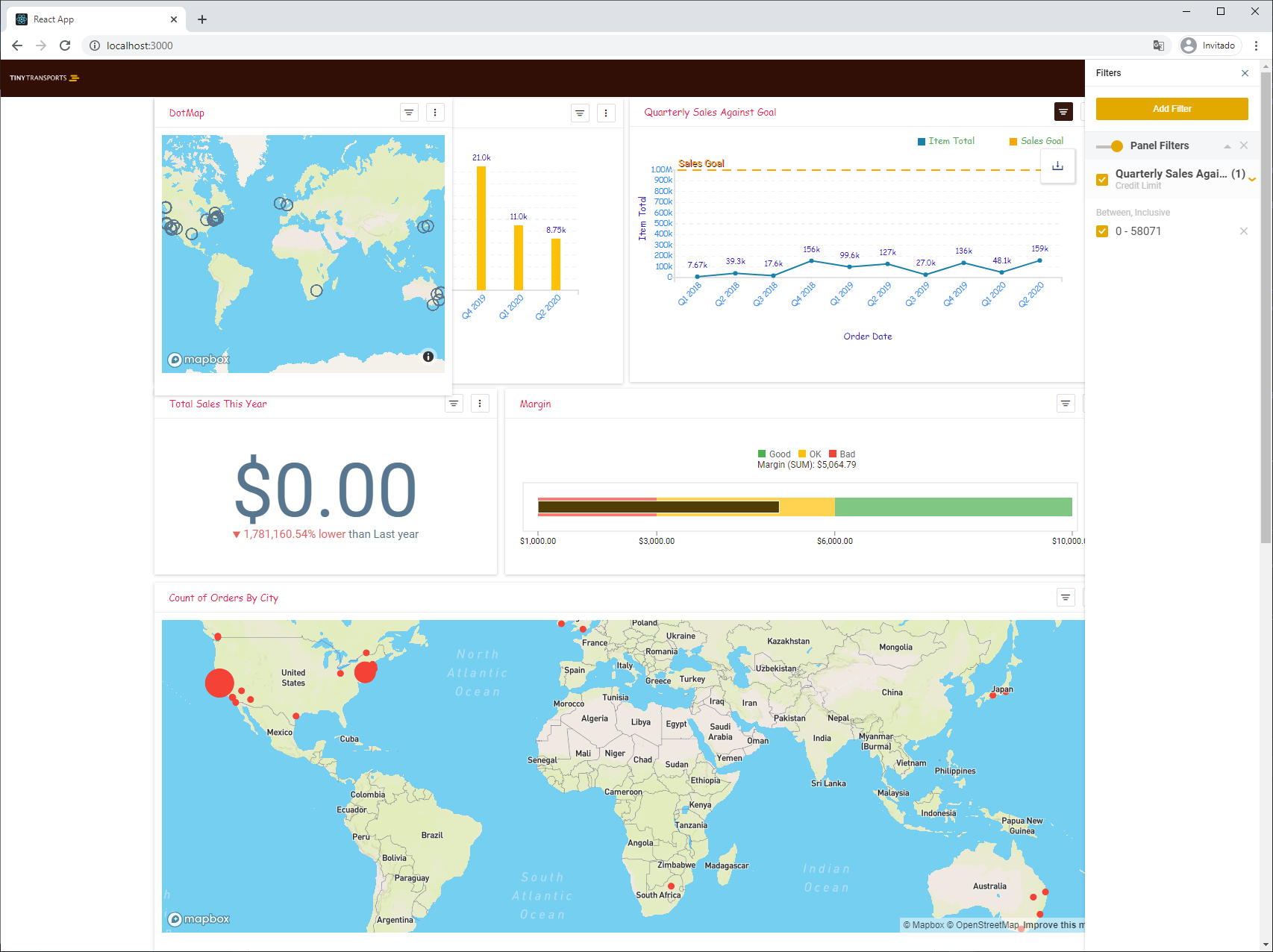Qrvey is a Web Component-based analytics platform, using multiples technologies such as stenciljs, Angular and Vue.js.
In this repository we are giving instructions to use the qrvey-end-user component in Vue.js 2.6.
Use a script tag linked to a CDN copy of your Qrvey loader distribution, for example:
// index.html
<script src="//421850935145sandboxqrveywidgets.s3.amazonaws.com/widgets-launcher/app.js" type="text/javascript">
Or you can load the script dynamically, in this example we are going to use this function:
const importScript = (url) => {
document.body.appendChild(Object.assign(document.createElement('script'), {
type: 'text/javascript',
src: url
}));}
importScript("//421850935145sandboxqrveywidgets.s3.amazonaws.com/widgets-launcher/app.js");
In order to use the custom element within the Vue app, inform the Vue compiler which elements to ignore during compilation. This can be done within the main.js file:
// Tell Vue to ignore all Qrvey components.
// The regex assumes all components names are prefixed 'qrvey'
Vue.config.ignoredElements = [/qrvey-\w*/];
Now you are ready to use the qrvey-end-user element. To avoid issues with non-scalar data (data that is not a string or number) qrvey-end-user was designed to work with a string property called settings, and a variable in window which name should be the exact value of the settings property. For this example we are going to wrap the web component in a Vue Component:
// components/EndUser.vue
<template>
<qrvey-end-user :settings="'endUserConfig'"></qrvey-end-user>
</template>
<script lang="ts">
export default {
name: "EndUser",
props: {
config: Object,
},
beforeMount() {
window['endUserConfig'] = {...this.config};
},
}
</script>
The final step is the setup of a valid configuration object. For more details about qrvey-end-user configuration object, read official docs.
<template>
<div id="app">
<EndUser :config="configObject"></EndUser>
</div>
</template>
<script>
import EndUser from "@/components/EndUser";
import {importScript} from "@/importScript";
importScript('//421850935145sandboxqrveywidgets.s3.amazonaws.com/widgets-launcher/app.js');
export default {
name: 'App',
components: {
EndUser
},
data() {
return {
configObject
}
}
}
</script>
In the root directory, run:
npm run serve
Open http://localhost:8080 to view it in the browser.
If you are experiencing issues with qrvey-end-user element in your Vue.js app, please contact Qrvey team.

